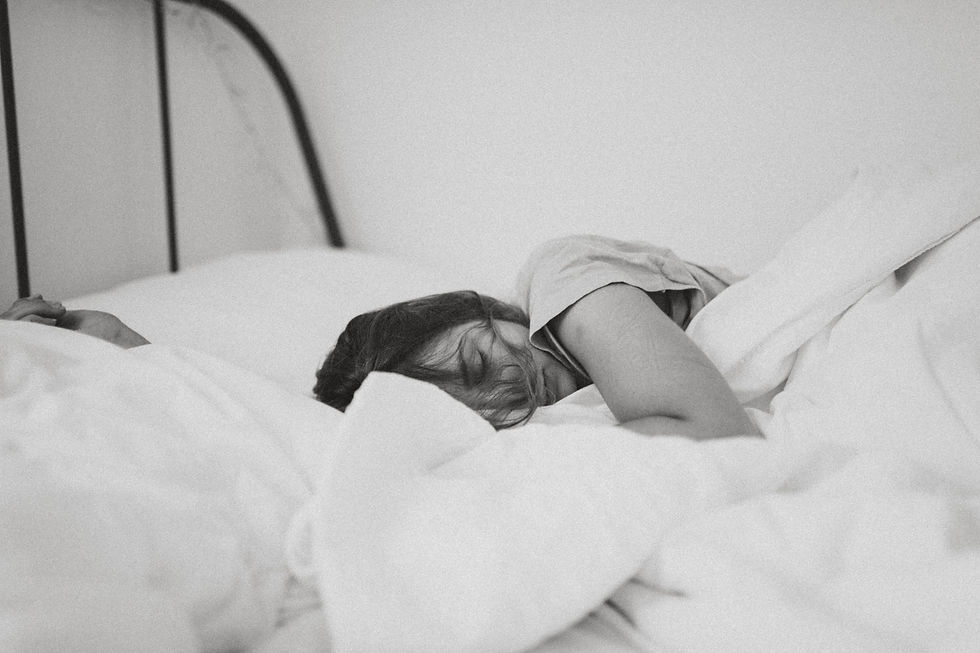Injuries that Affect the Human Spring: A Personal Reflection of My Own Experience
- kcraig26
- Jan 20, 2020
- 5 min read
Have you ever had an injury that you thought would get better if you just wrapped it and left it alone? That’s what I thought when I sprained my ankle playing basketball at a fraternity event my senior year of college, more specifically the fall of 2014. I was going in for a layup against a larger opponent (weight and height), and he bumped into me as I was lifting off that right foot, causing it to roll outward. Once I felt the two pops as I fell over, I knew I sprained it. When I got back to town, I just limped on. I wrapped it, didn’t bother using crutches, and just hobbled my way to class. I was used to carrying on when I was hurting, but what I didn’t know was that by not getting it treated and strengthened, it would cause a list of injuries down the road.
Injury list, according to my memory:
Fall 2014: right lower outer ankle sprain
Fall 2015: pulled right groin from overuse coaching soccer
Spring 2016: strained right middle hamstring
Summer 2016: strained right outer hamstring
Summer 2017: right lower outer ankle sprain (again…)
Summer 2018: left calf strain

Figure 12: Tendon and Ligaments of the foot (Credit: orthobullets.com)
My initial injury damaged ligaments responsible for keeping my ankle stable (see Fig. 12). The Calcaneofibular Ligament, which attaches to the Calcaneous (heel bone) and the Fibula (smaller shin bone), is the ligament that was damaged in my outer low ankle sprain; other ligaments possibly affected in an outer ankle sprain are the Anterior and Posterior Talofibular Ligaments. To illustrate the importance of healthy ligaments, think of them as steel cables holding a tower up and keeping it from falling over from wind gusts. When I suffered an outer ankle sprain, I didn’t completely snap the ligament, but many of the connective tissues of that ligament were damaged. This reduced the strength in the cable, thus causing over-pronation in my ankle. What made things worse was that second sprain to the same ankle in 2017; I treated it the same way as the first, but I used a brace to help stabilize the ankle. Now there’s no pain due to the sprain, but I suffer from severe over-pronation in my right ankle.

Figure 13: Landing Positions of the Foot
The hamstring injuries I suffered were most likely from running for years on a weak human spring and the sudden use of them in soccer. My second sprain created a biomechanical misalignment in my knee, which resulted in an imbalance in the muscles in both legs. The left leg had to overcompensate for the right foot’s inability to keep a straight path when walking. My left calf tightened up over time and finally gave in during a summer soccer practice. I wasn’t going hard at all, just a casual workout. The injury to my calf may have also happened due to a lack of adequate hydration; hydration will be the next topic. That morning I had coffee but no water, and even though I stretched out before playing, my left leg landed in a small lump in the ground, and my human spring just couldn’t handle it. The breaking of that part of the spring brought forth some over-pronation in my left ankle, but not as much as the right.
I was finally examined by Dr. James Stoxen in September of 2019, and he basically said I'm pretty screwed up. Yet, for this guy, no condition is irreversible. What I didn't know was that all my years of playing soccer, running, and other sports in shoes with arch supports basically beat my feet into solid bricks! I never utilized the spring capabilities in my arches, and always wore running shoes with high toe-rises (BAD). This put constant tension on my flexor hallucis longus tendon, connecting to my big toe, and flexor digitorum longus tendon, connecting down to my other toes (see Fig. 14). This causes my toes to be in a state of pointing upward when my foot is normal. Because of my ankle sprains, there is more space in my right ankle between the bones in that joint. I have shin splints in both legs because of the torsion applied from the twisting of my feet when I walk. My calves are tight/locked up, and my right outer quadricep is overused to compensate for the medial (inward) sinking of my leg due to the over-pronation of my ankle. I'm a wreck, yet there's hope.

Figure 14: Tendons in the Foot
First, I need to flush out any and all inflammation in my legs and release the tension in all the major muscle/tendon groups in the spring system. Next is to stretch out and strengthen the tendons and ligaments surrounding my ankles. Many of the exercises in my regimen are outlined in the last post, which can be found in chapter 5 of “How I Got My Wiggle Back”. This treatment will draw my ankles back into alignment so I can begin strength training and running without the worries of injuring myself. Alignment is necessary for the barefoot/minimalist approach to running, which is what I need to do to start running again. This requires a change of form to land on my forefoot or mid-foot and use the spring in my arch. It may be something I’m not used to, but it will keep my legs going without the need for surgical reparations in the future.
This is my personal reflection of my own injuries that have affected the spring capabilities of my body. There are many other injuries and conditions to be aware of that affect your human spring. The main injuries and conditions that come to mind are:
Plantar Fascitis
Bunions
Over-Supination of the Ankle (Ankle Rolls Outward)
Achilles Tendon Tear
Arthritis (Buildup of Inflammation)
Hip Injuries
Herniated/Ruptured Spinal Discs
Spinal Misalignment
Injuries to the Back and Chest Muscles
Poor Posture
If you are suffering from any of the above injuries/conditions, I recommend seeing your doctor. I also recommend getting a back adjustment from a Chiropractor to keep alignment of the spine and to keep the spine's ability to protect against impact. For rehabilitation of a minor injury (like an ankle sprain), I recommend seeing a Physical Therapist and getting a personalized rehab regimen put together.
As I mentioned earlier, the next segment in this blog will be about the importance of keeping hydrated to keep a strong human spring. If I were properly hydrated, my calf would have made it through that practice. I will discuss some statistics from the National Athletic Trainers Association and a study in the journal of Athletic Training. This will all connect to how dehydration weakens all the parts of the body responsible for the human spring and optimal performance.
A great product for muscle and joint injuries is Recovery, created by a former collegiate baseball player who suffered an elbow injury. The dual cryotherapy and compression properties apply uniform treatment to the whole area of coverage. These products are found here.




Comments